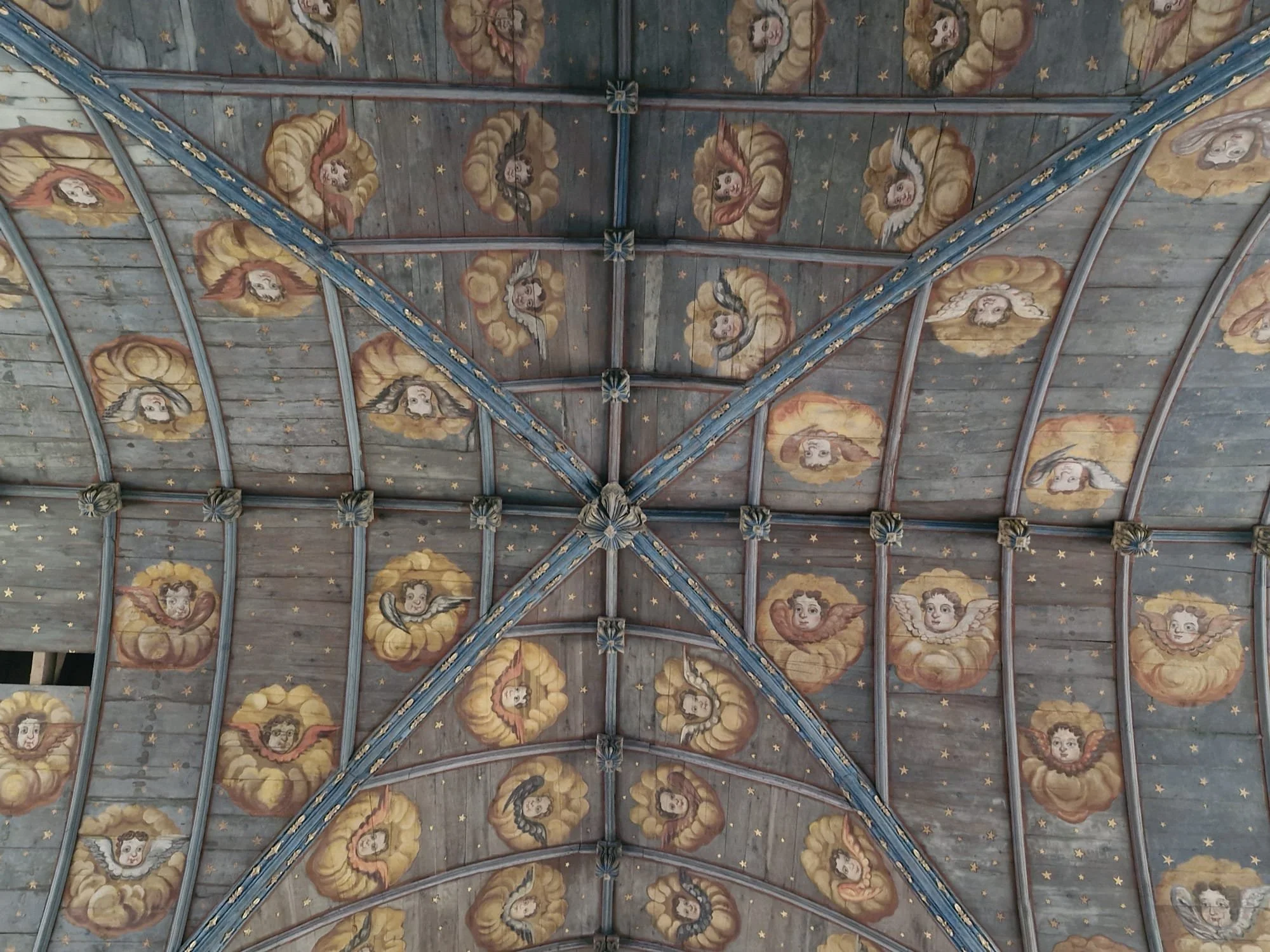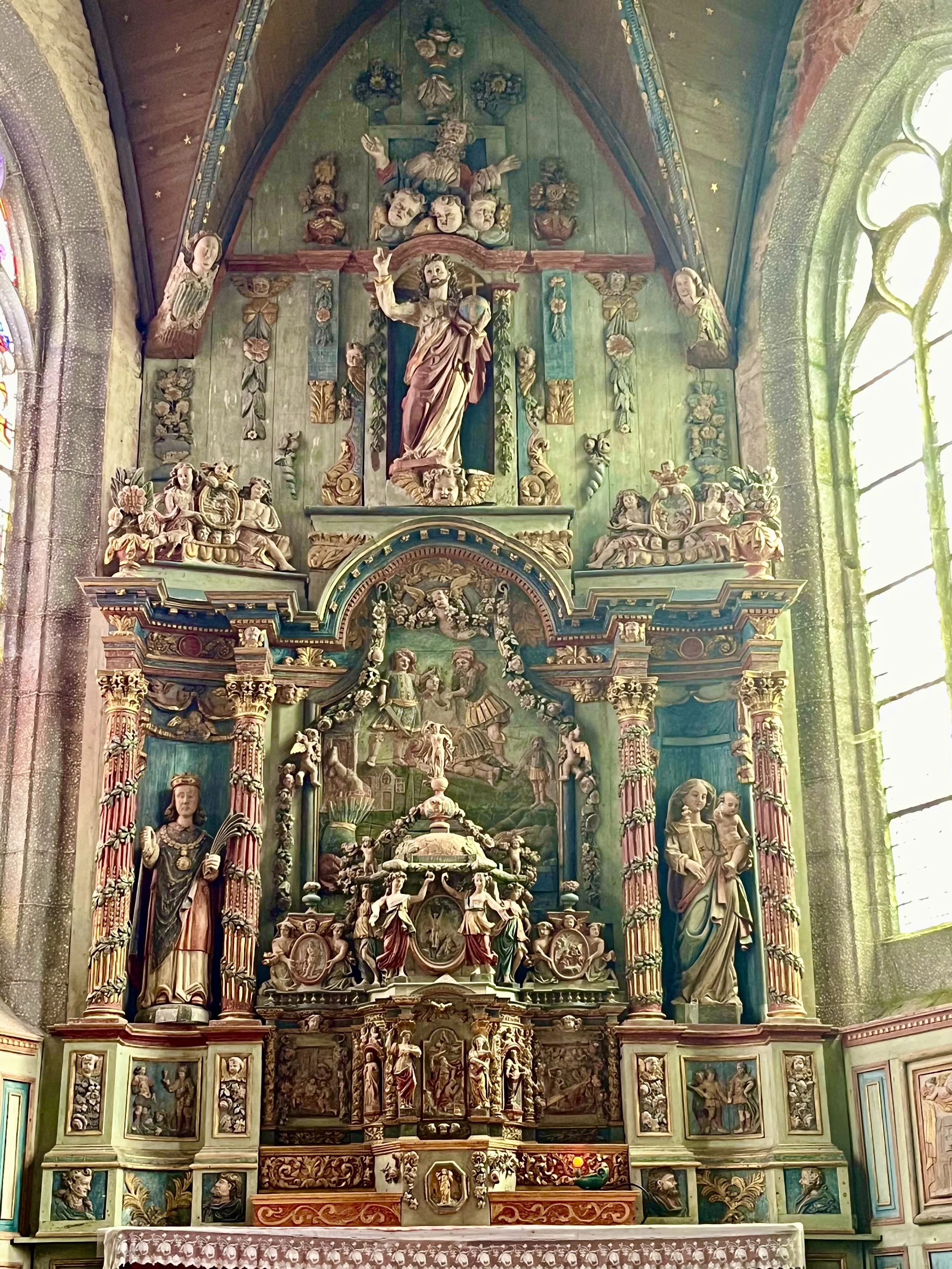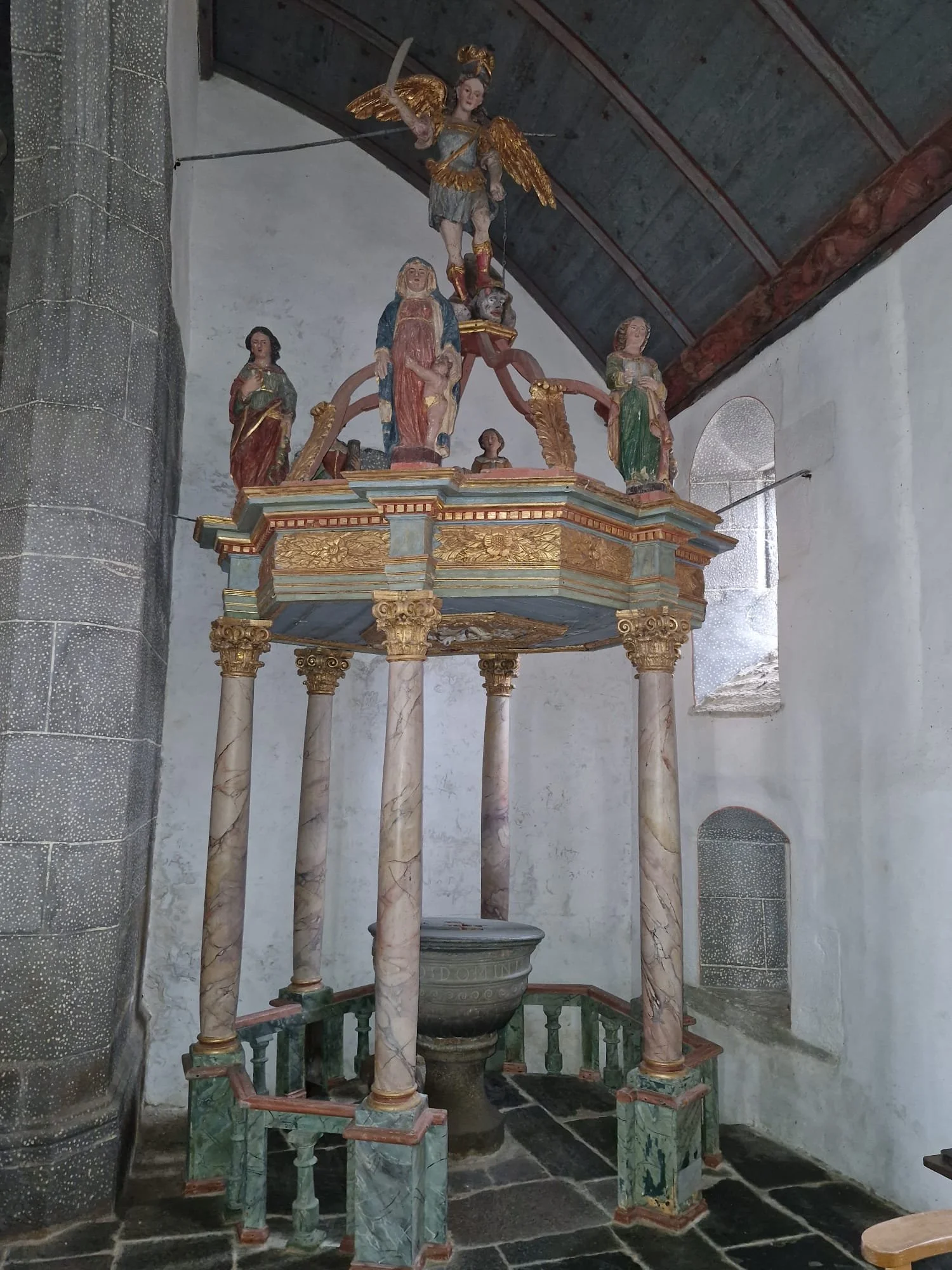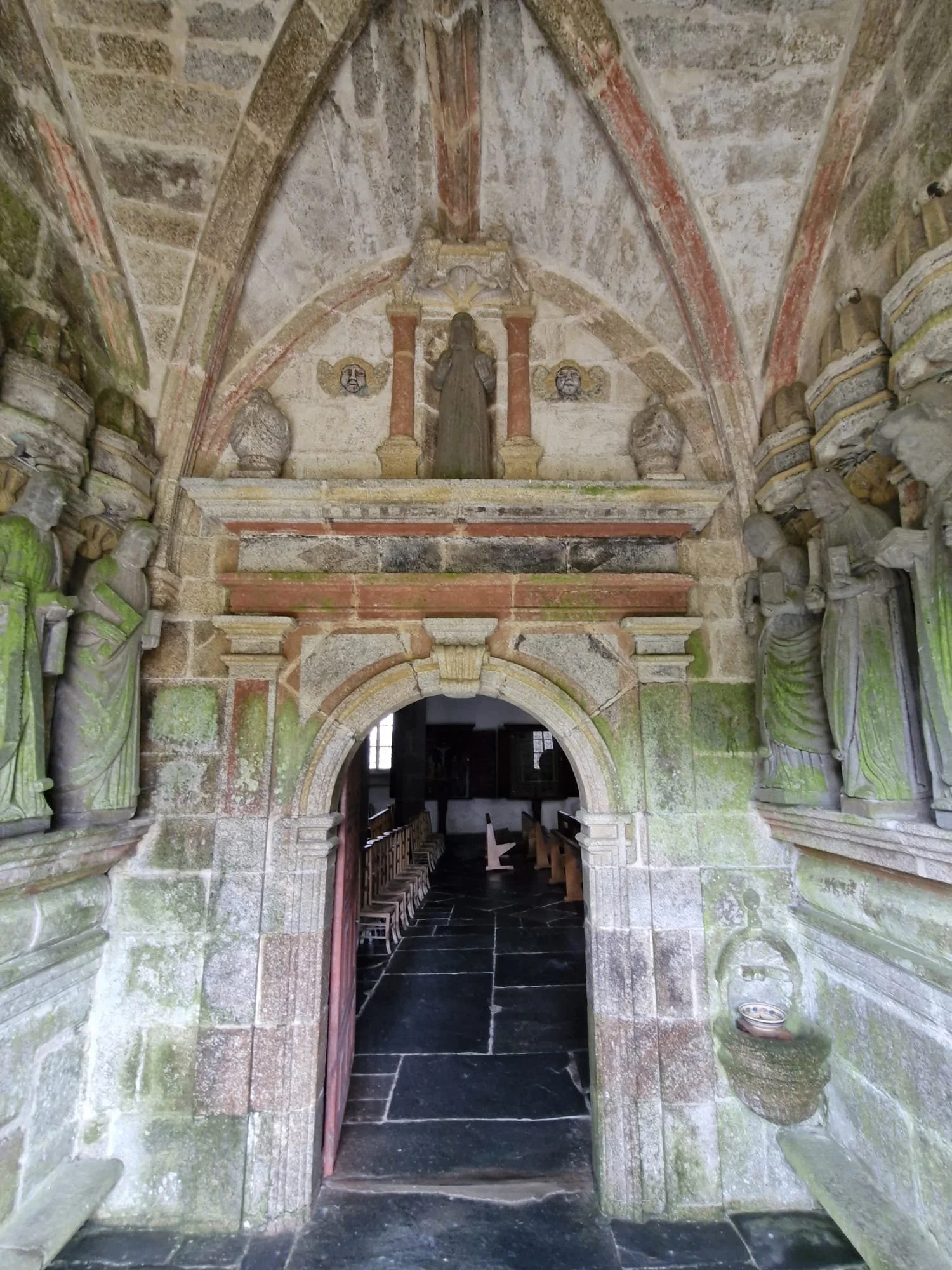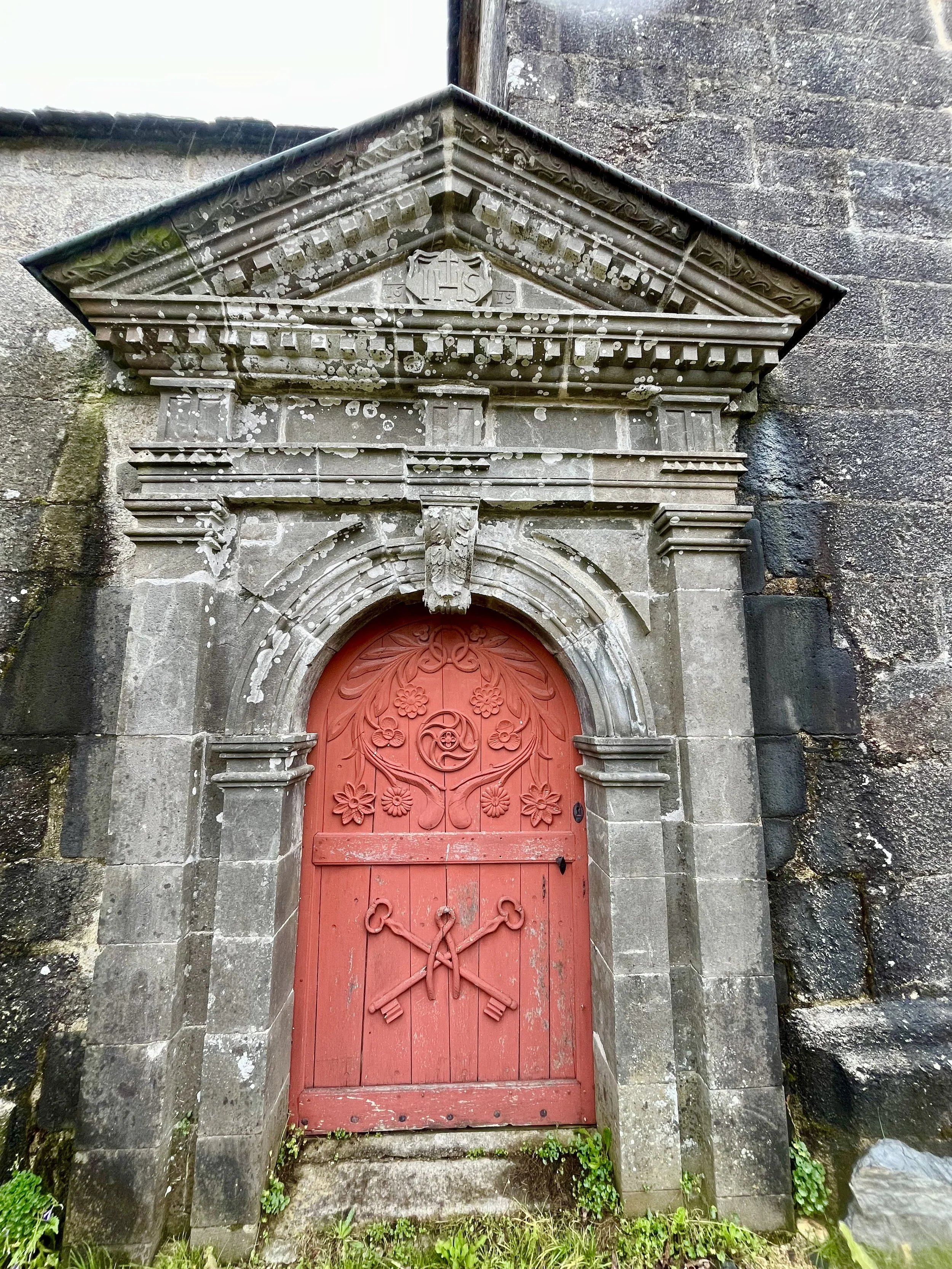Visiting the Enclos Paroissiaux of Brittany: Locmélar & the church of Saint-Melar
Locmélar isn’t the sort of place you stumble across by accident. It’s a small, quiet village tucked into the Finistère countryside, away from any major road, the kind of place you might miss entirely if you blinked at the wrong moment. But behind its unassuming setting hides one of the loveliest parish closes in Lower Brittany—a reminder of a time when even the smallest communities poured their energy (and wealth) into making something beautiful, and just a little bit grand.
This one belongs to Saint Melar. And his story is… well, not exactly your usual saintly childhood.
Saint Melar: A Life Shaped by Tragedy and Faith
According to tradition, Melar was born in the late 5th or early 6th century, the son of Miliau, a ruler of Domnonée in Brittany. His father was widely respected for his justice and piety, but his reign was cut short by his own brother, Riwod, who sought the throne for himself.
Melar, still a child, was the rightful heir, but Riwod saw him as a threat. In an act both cruel and symbolic, he ordered that the boy’s right hand and left foot be severed, making it impossible for him to wield a sword or ride a horse—two essential signs of princely authority. Yet the legend says that God intervened: an angel appeared and gave Melar prosthetic limbs of silver, perfectly fitted, which moved and grew with him. In the hagiographic tradition, these silver limbs were not merely miraculous healing—they were signs of divine election, a physical mark that Melar’s strength came from God, not earthly power.
Under the guardianship of loyal retainers, Melar grew in wisdom and piety, his life marked by acts of charity and a refusal to seek revenge for his father’s death. But Riwod’s hostility never ceased. When Melar reached adolescence, Riwod sent two men to kill him. One struck off his head; the other stood by. Tradition says they were punished immediately—one fell from a high place, the other was struck blind. Melar’s relics became objects of veneration, and his story spread across Brittany, Cornwall, and beyond.
In the church at Locmélar, the high altar, the carved choir panels, and painted scenes all return to Melar’s image. Sometimes he is shown holding the palm of martyrdom, other times revealing the silver limb that made him both vulnerable and extraordinary. The story is told not for its violence, but for its enduring themes: the innocence of a child unjustly treated, divine protection in the midst of danger, and steadfastness in faith.
A Modest Enclos with Big Personality
Locmélar’s parish close is smaller than some of its more famous neighbors, but it ticks all the boxes: walled churchyard, monumental calvary, south porch, tall tower, and even the remains of an ossuary (dismantled in the 1920s). You enter through two sculpted pillars and straight ahead is the 33-meter Beaumanoir-style tower (1589), complete with its corner stair turret and decorative spires. To the right, the chevet from 1681 shows off three gables topped with lanterns—a proper flourish to end a century of construction.
The calvary, carved in dark kersantite around 1600, is thought to be by the master of Plougastel. It would once have been vividly painted, and it still has a quiet drama about it: the Virgin and Saint John on the upper beam, the thieves’ crosses and horsemen below, a central Pietà, and on the reverse, Saint Melar, Saint Peter, and Mary Magdalene.
The south porch (1664) shelters a gallery of polychrome Apostles—still with their original paint—and mixes Gothic vaulting with Renaissance columns. It’s a bit of everything, and it works.
Inside: Baroque Meets Breton
Step inside, and it’s all warmth and wood and that very Breton mixture of exuberance and practicality. The high altar retable is pure late-17th-century Baroque, with fluted columns wrapped in green foliage, garlands of fruit and flowers, and cherubs everywhere. In the center, Saint Melar’s martyrdom is depicted with all the theatrical flair you’d expect from a parish determined to show off both its devotion and its craftsmanship.
The north transept houses a rustic Virgin and Child; the south belongs to Saint Hervé, the blind saint, shown with his faithful wolf. His life is told in little medallions, including the time the wolf made up for eating the saint’s donkey by pulling the cart himself.
Look closely and you’ll find more treasures: a 17th-century pulpit, a Pietà with a whiff of Flemish influence, baptismal fonts from 1612 crowned by a canopy with Saint Michael trampling the devil, and two embroidered processional banners in silk, gold, and silver. One dates to the 1500s and features Saint Peter surrounded by angel musicians—perfect for reminding the neighbors at a pardon procession that Locmélar had style.
Still Very Much Alive
For all its history, the church isn’t a frozen relic. Restoration work is ongoing—recently on the south window masonry, and also on the confessionals, retables, and the baptismal canopy, with more to come in September. The polychrome paint is being carefully brought back to life, which means when you visit, you’ll be seeing something much closer to what the parishioners of the 1600s would have known.
Locmélar may be small, but its enclos tells a big story: of local pride, skilled hands, and the idea that beauty matters, even in the middle of the countryside. And if you leave remembering only one thing, let it be this—never underestimate a Breton saint with silver limbs.
Next stop: Sizun — where the artistry of Brittany’s parish closes reaches an even grander scale.
… and if you missed the others, check out La Roche-Maurice and La Martyre.


